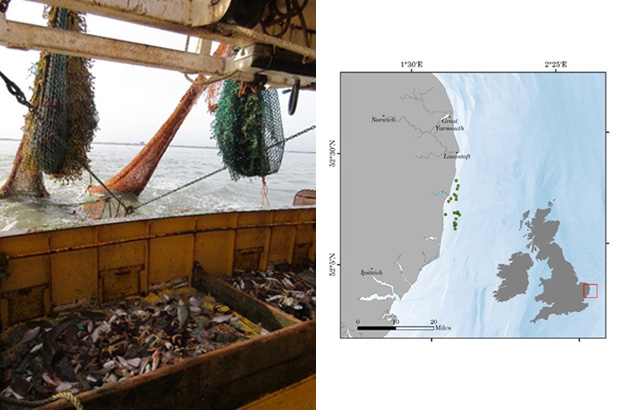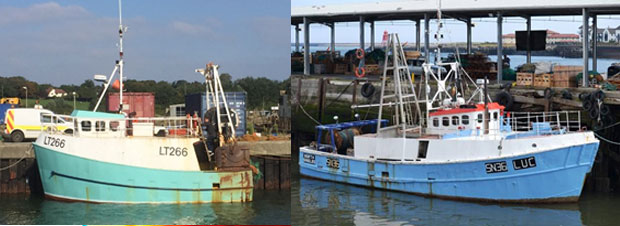Half of undersized sole survive after being caught and discarded in the English east coast inshore otter trawl fishery, according to preliminary results of research conducted by Cefas scientists. Senior scientist Tom Catchpole provides an update on the survival of inshore caught Dover sole.
Last time I explained the need for scientific evidence for discarding, and today I'm going to explain the most recent developments from our work.

Currently we are investigating:
- the survival of discarded sole (Solea solea) caught by inshore trawlers working from the east coast of England (principal investigator: Ana Ribeiro Santos)
- the survival of plaice caught by trawlers targeting Nephrops (scampi – Nephrops norvegicus) in the North Sea (principal investigator: Peter Randall)
- the survival of Nephrops caught by highly selective Nephrops trawls (principal investigator: Frank Armstrong)

What does our latest research reveal?
My last post talked about Nephrops and plaice survival work; today I’m focusing on the survival of Dover sole caught and discarded in the inshore fishery off the east coast of England by otter trawlers.
Survival of inshore trawl caught (Dover) sole (Solea solea):
The objective of this project was to estimate the survival of Dover sole caught in the English east coast inshore otter trawl fishery and the work was led by Dr Ana Ribeiro Santos of Cefas. There is a strong perception from the fishing industry that sole has a high survival rate in this fishery and, where sole quotas are restricted, landing undersized sole could potentially risk a premature end of the fishing season, be logistically difficult and to the cost of fishermen. Under the landing obligation, all sole (Solea solea) catches have to be landed unless an exemption, based on scientific evidence demonstrating high survival, is awarded.
The selected approach to estimate survival rates was to collect health information on sole caught under normal fishing conditions and combine this information with the survival rates of captive sole with different health scores, this would generate a weighted overall survival rate for sole. We monitored 287 sole in our on-board and on-shore mobile aquaria and recorded the fatalities, and we have assessed the health of a further 1,575 sole in the catch so that we can estimate the level of survival for all of the observed hauls.
A draft report submitted to Defra describes that, after an observation period of 360h, the estimated overall survival was 51% for those sole under the legal landing size (or Minimum Conservation Reference Size) and 46% for the whole catch. Further statistical analysis indicated that there may have been limited mortality beyond this time period, with 48% survival for the undersized sole.

We didn't include in our estimate any bird predation or other marine predation on discarded fish, therefore it is possible fewer fish survived than we estimated. However, we do have some limited information that birds will feed on discarded fish. But these are mostly on dead and dying fish which would not affect our estimated survival rate.
The survival rate estimated in this project of 51% for under sized sole, and 46% for all sole, should be interpreted as the minimum discard survival estimates that don’t include experimental mortality or predation.
From research to recommendations
The results and evidence generated from these projects will be used immediately in policy decisions. The estimated survival levels will be reviewed by Defra and fisheries ministries from other EU countries, and they will decide whether the survival is sufficiently high to propose an exemption from the discard ban.
To extrapolate the results from this study to the wider fishery, which stretches as far west as the Solent and as far north as Norfolk, it would need to be assumed that the conditions are the same in whole area and during the whole season, as the trips observed here. This study was done under normal commercial fishing conditions and during the sole fishing season. Doing similar work in other locations would provide the most robust fishery level discard survival estimates.
The decisions on survival exemptions will be included in the discard plans agreed by the countries in each management region, and this study is being discussed at this time. If put forward to support an exemption, the request will be assessed by the EU Commission, before being passed into EU law.
For the discard plans to be adopted for 2017, the supporting evidence must be available by May 2016, so we are working hard to make sure the evidence needed is provided in time for the fishery managers to make decisions that will help the fishing industry.